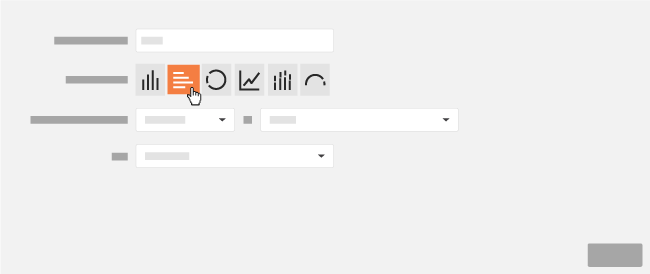Add a Visual to a Project Single Tool Report
Objective
To add a visual to a single tool project report.
Background
Adding visuals to a report transforms raw data into clear, graphical insights. Instead of reviewing rows of data, you can use charts and graphs to quickly identify trends, compare categories, and understand proportions at a glance.
The Reporting tool offers several visual types—such as bar, line, and donut charts—each designed for a specific purpose. This allows you to select the best format to represent your project data effectively and make your reports more impactful
Things to Consider
- Required User Permissions:
- 'Standard' level permissions or higher on the Project 360 Reporting tool and 'Read Only' level permission or higher on the data source tool.
- Additional Information:
- When you clone a report, only the creator can add new visuals.
- The 'Add Visual' button appears for reports with fewer than 2,500 records, and each tab is limited to one visual.
- Your cloned report inherits any visuals from the original, but you can remove them and add your own.
Steps
- Navigate to the Project 360 Reporting tool.
- In the Reports tab, open the single tool report where you want to add the visual.
- Click + Add Visual.

- Enter a name for your new visual in the Descriptive Title box.
- Next to Type of Visual, click the desired button to specify which visual to create.
Note
Depending on the visual, you will have the ability to select different measures on which the report's calculations can be made.Type of Visual Description Purpose Measure If you select this option, do the following: 
Bar A bar graph is best used for visualizing trends and to represent changes over a period of time. COUNT, SUM, AVG, MIN, MAX - Select one of the supported measures from the Measure list.
- Select one of the available values from the Value list.
- Select the desired Category from the list.

Donut A donut (a.k.a., pie chart) is best used for showing relative proportion and to represent percentages. COUNT, SUM - Select one of the supported measures from the Measure list.
- Select one of the available values from the Value list.
- Select the desired Category from the list.

Line A line chart is best used for visualize trends by connecting data points over a period of time. COUNT, SUM, AVG, MIN, MAX - Select one of the supported measures from the Measure list.
- Select one of the available values from the Value list.
- Select the desired Category from the list.

Stacked Bar A stacked bar chart is best used for visualizing trends and to represent changes over time. It is helpful to use a bar chart when you require slightly more detail than a bar graph COUNT, SUM, AVG, MIN, MAX - Select one of the supported measures from the Measure list.
- Select one of the available values from the Value list.
- Select the desired Category from the list.
- Select the desired Second Category from the list.

Horizontal Bar A horizontal bar chart is best used for comparing data categories. COUNT, SUM, AVG, MIN, MAX - Select one of the supported measures from the Measure list.
- Select one of the available values from the Value list.
- Select the desired Category from the list.
- Select the desired Second Category from the list.

Gauge A gauge is best used for visualizing data that requires attention. It allows you to set a number or percentage threshold for your gauge. COUNT - Select one of the supported measures from the Measure list.
- Select one of the available values from the Value list.
- Select one of the available filters from the Filter list.
- Select the desired threshold value from the Turn Yellow if its Greater Than list.
- Select the desired threshold value from the Turn Red if its Greater Than list.
- Click the number or percentage button in the Show Thresholds As area.
- Click Save.
- Optional: To export your report with your new visual, click Export and select PDF with Visuals.

